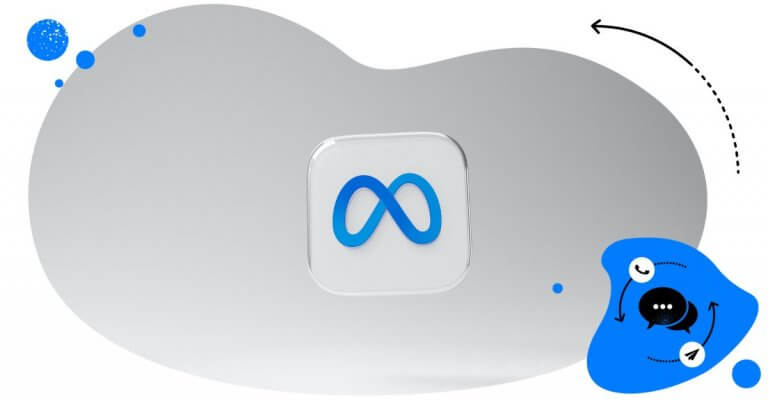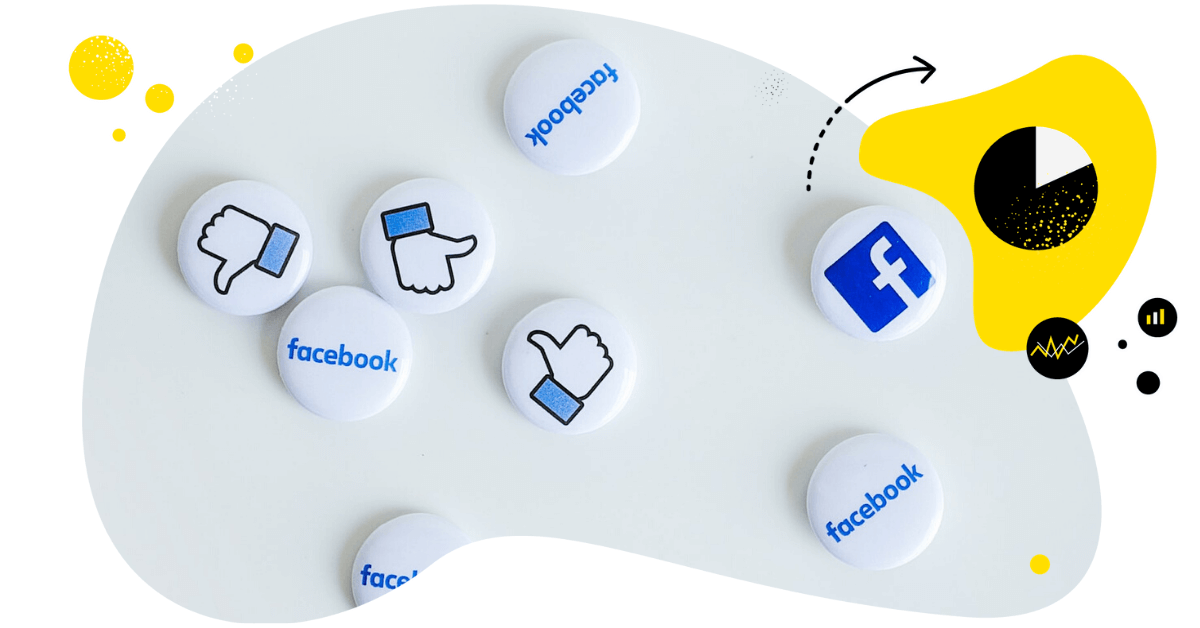The more you know about your audience, the better content and ads you can deliver to them, and the more effective they’ll be. Here’s how to use Meta Audience Insights to learn more about Facebook users – and what you can do with that knowledge.
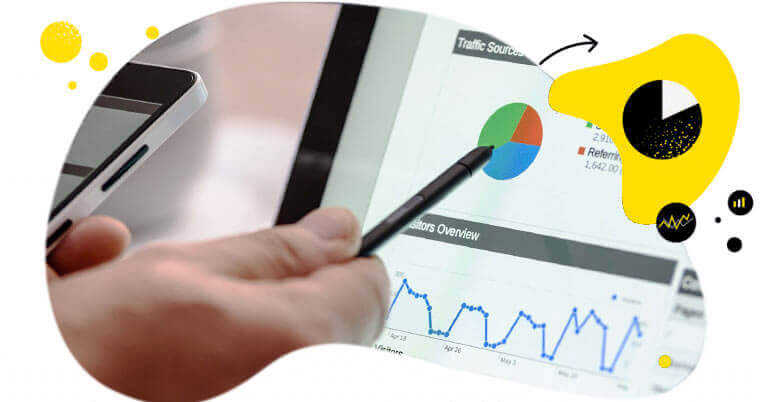
Automate Facebook and Instagram Reporting
Showcase your results with comprehensive social media reports. Automate report delivery to keep your team, clients, and stakeholders in the loop. Make data-informed adjustments to your strategy – with an all-in-one social media tool.
What are Audience Insights?
Audience Insights is a free tool from Meta, letting you learn more about people on Facebook and Instagram. It anonymously aggregates data in people’s Facebook profiles to help you learn more about your current and potential audience and the general trends on Facebook.
It shows information about groups of people without having to share individual data. You’ll see things like their demographics, interests, location, etc., which together help predict their lifestyle choices. That, in turn, will let you target ads more accurately to the right people who are potential buyers of your products and services.
It’s part of a bigger Insights product, where you can also see, for example, content insights and benchmarking data, allowing you to compare your Facebook Page to businesses like yours.
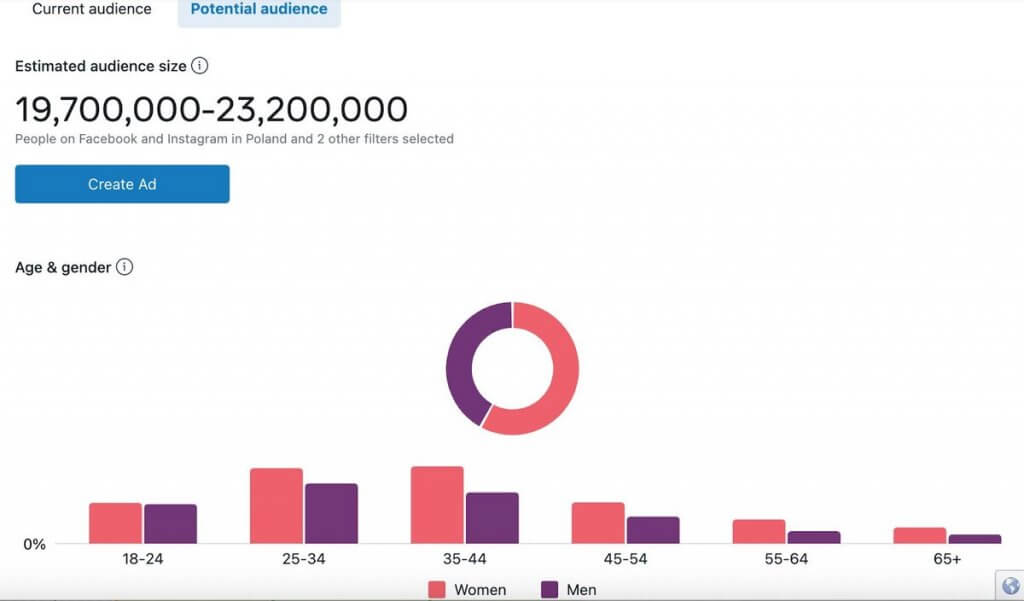
Where to find Audience Insights on Facebook
You can go straight to this page or also reach it via the Meta Business Suite menu, right below Ads.
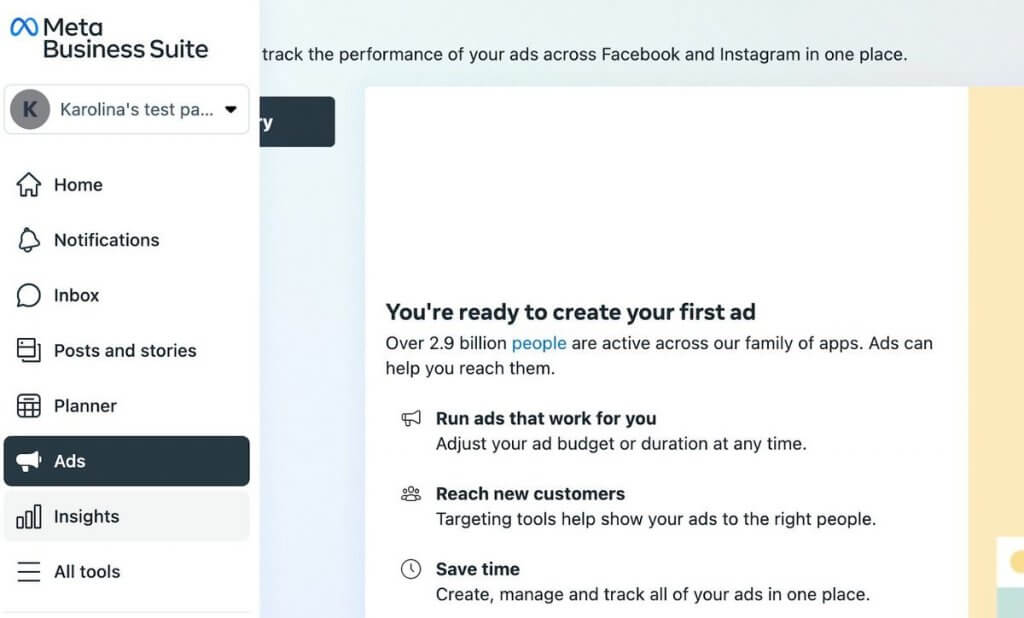
What data does Meta collect about your potential audience?
Meta is famous (or infamous, depending on how you look at it ;)) for collecting a plethora of insights about Facebook users, helping display potentially relevant ads to relevant target groups. Here’s a roundup of what information you can use to target your audience on Facebook and Instagram, taken straight from the horse’s mouth:
- Demographics: Age, gender, lifestyle, education, relationship status, job role, and household size
- Page likes — The top pages people like in different categories, like women’s apparel or sports
- Location and language
- How they use Facebook — how frequently they log in to Facebook and on what device
- Buying habits e.g., past purchases and purchase methods (e.g., in-store or online)
On Audience Insights, you can currently filter your potential audience using:
- Location
- Age
- Gender
- Interests
- Language they use Facebook in.
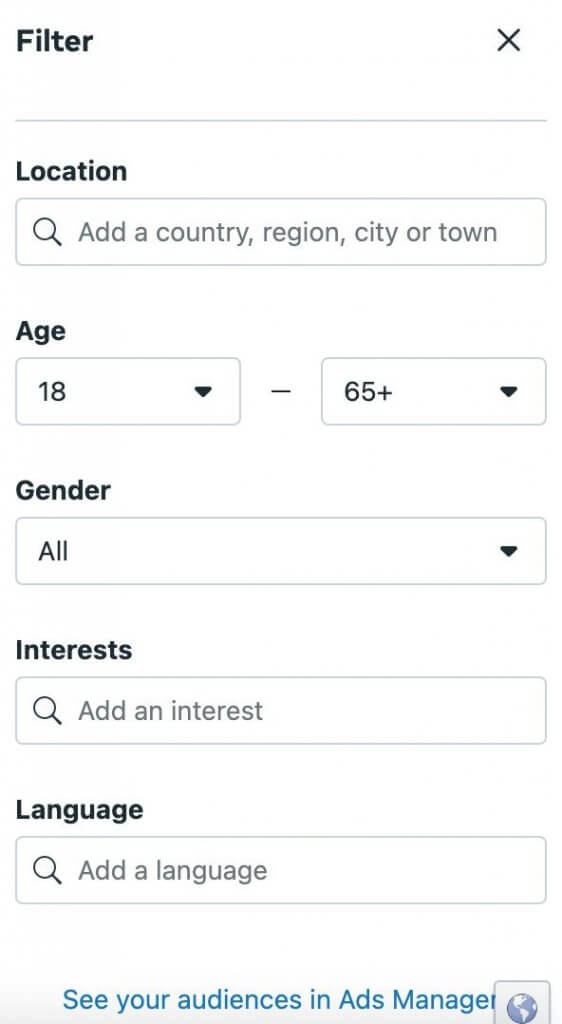
You can then create ads for people in your audience in Ads Manager.
How you can use the data provided by Audience Insights for your business
Apart from the obvious – creating targeted ads, Audience Insights can be a significant first step to determine whether:
- You have the right product-market fit. Are there enough people on Facebook and Instagram that would see your ads and could potentially be interested?
- You actually know your audience on Facebook and Instagram. You can use the data to complete your customer personas and define specific target audience segments. Their interests and other data will also help you find ideas for your next ad campaigns on Facebook and Instagram.
- You’re reaching the right people with organic content and ads. The insight available from Meta can help you adjust both so that your content and your ads meet your audience’s needs and expectations (and this means they’re more likely to work.)
- You have the right audience segments for your individual products and services. This is also true for people in different stages of the customer journey, who will also most likely need different content and respond to different ads.
And much, much more – it’s really up to you and your marketing team to decide how you use the data you have at your fingertips. And with so much talk about the data-driven approach in marketing (and countless case studies showing its effectiveness), you could be really missing out not tapping into that data.
And speaking of Facebook advertising…
When and why you should consider advertising on Facebook and Instagram
The answer could be short: whenever you have a product or service to sell. Okay, let’s narrow that down to also whenever your target audience actually uses Facebook and Instagram (which these days, it probably will. But of course, if they don’t, there’s no point in spending any advertising money there. Simple.)
And this is regardless of the industry you’re in – as long as your potential customers can see your ads. So, this could work if you run:
A language school
The audience data from Meta (the Meta data – how clever!) will help you see if there’s a big enough market for your services in your local area. That’s when you have traditional offline classes and want people in nearby areas to see your ads.
Finding different age groups will help you target potential audiences for different classes. And if you run Business English classes, you can easily reach executives or people in different industries who might be interested.
A local coffee shop
Or really, any kind of local business that needs to attract customers. Find them by location and further narrow the group by age and interests (Coffee! But maybe also things like music and design? Depending, of course, on who you’re specifically targeting with your business.
And by the way, that’s what I meant by saying earlier that it can help you complete customer personas and attract a specific kind of crowd.)
An advertising agency (or any other B2B service)
Sure, LinkedIn is THE B2B social media platform. But people working in other businesses that are your potential clients also use Facebook and Instagram. And I hope you know we’re all advertising something to people, not businesses. 🙂
Facebook and Instagram ads can help you reach a very precise audience for your service (but if you’re an advertising agency, you probably know that, right?)
An eCommerce business
Whoever once said, “Facebook doesn’t sell,” has probably taken it back many times since. Or they never ran an online store of any kind.
Facebook and Instagram ads are really effective for eCommerce businesses. And the better targeted they are, the more sales they will bring. (Thank you, Captain Obvious).
A service-based business
Whether you’re a coach, therapist, or nutritionist, social media gives you tons of opportunities basically in any field – and not just by creating relevant educational content (that you can promote with ads, by the way). Advertising your services with ads will help you find the right leads and fill your sales pipeline. As long as you know your ideal customer profile.
When you run your ads, don’t forget about this one easily missed thing
The thing with social media ads is that they’re… on social media. This means people can (in most cases) leave comments underneath them. And you need to moderate them.
Yes, I know that’s usually not what people think about when setting up their multiple Facebook and Instagram ad campaigns targeted at the different audience segments.
And the more ad variants and audience segments you have, the more comments you’ll likely have to moderate. It’s simple math.
These comments can be:
- Questions about the product – which might be sales opportunities you wouldn’t want to miss.
- Complaints from current and past customers – which is not what you want under a post with reach you’re actually paying for.
- Spam and competitor links – see previous point.
The more ad campaigns you run, the more prepared you have to be to moderate the comments (and better not leave it up to the PPC person running them. No offense to PPC people.) And a great way to do that is to get a social media management tool that lets you moderate ad comments in addition to organic post comments. Bonus points if it will also let you automate some of that moderation.
Which is what you can do with NapoleonCat’s Social Inbox and its Auto-moderation tool:
- Get all comments on Facebook and Instagram ads in one dashboard, along with all your social media moderation.
- Reply from one place to all your ad comments. And if you have a team, you can delegate comment threads to different customer service team members.
- Automate comments on Facebook & Instagram, for example, by automatically hiding or removing spam or competitor links (there’s even a ready-made automation rule that you can use.)
- You can also set up automated responses to the most frequently asked questions, so that’s taken care of for you, too.

Already feeling relieved?

Manage your FB & IG ad comments – all from one dashboard
Monitor and manage all your Facebook & Instagram ad comments with an all-in-one social media tool. Never miss a single comment.
Running successful Facebook and Instagram ads is more than posting a picture and a caption
To get the results you’re after – and avoid burning your advertising budget – you need to start with a detailed target audience profile first.
It’s also important to remember that none of these insights are set in stone, and they will probably change as online trends change. So, keep revisiting your ads and ad targeting to see what brings the best results for your business and what just doesn’t work anymore.
And don’t forget to moderate your ad comments! You’ll be glad you did.

